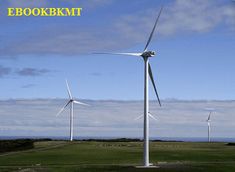DỊCH HOÀN THIỆN ĐỀ THI IELTS READING VÀ GIẢI THÍCH ĐÁP ÁN:
An assessment of micro-wind turbines
A. In terms of micro-renewable energy sources suitable for private use, a 15-kilowatt (kW) turbine is at the biggest end of the spectrum. With a nine metre diameter and a pole as high as a four-storey house, this is the most efficient form of wind microturbine, and the sort of thing you could install only if you had plenty of space and money. According to one estimate, a 15-kW micro-turbine (that’s one with the maximum output), costing £41,000 to purchase and a further £9,000 to install, is capable of delivering 25,000 kilowatt-hours (kWh)’ of electricity each year if placed on a suitably windy site.
Về mặt nguồn năng lượng tái tạo vi mô phù hợp cho sử dụng tư nhân, thì một tua bin 15kw là cái lớn nhất trong dãy. Với đường kích 9m và một cột cao bằng ngôi nhà bốn tầng, đây là hình thức tuabin vi mô gió hiệu quả nhất và loại mà bạn có thể lắp đặt chỉ khi bạn có nhiều không gian trống và tiền bạc. Theo như một ước tính thì một tua bin vi mô 15kW ( đó là cái có công suất tối đa), tốn 41.000 bảng Anh để mua và thêm 9000 bảng nữa để lắp đặt, có khả năng tạo ra 25.000 kwh điện mỗi năm nếu đặt ở một nơi có gió phù hợp.
B. I don’t know of any credible studies of the greenhouse gas emissions involved in producing and installing turbines, so my estimates here are going to be even more broad than usual. However, it is worth trying. If turbine manufacture is about as carbon intensive per pound sterling of product as other generators and electrical motors, which seems a reasonable assumption, the carbon intensity of manufacture will be around 640 kilograms (kg) per £1,000 of value. Installation is probably about as carbon intensive as typical construction, at around 380 kg per £1,000. That makes the carbon footprint (the total amount of greenhouse gases that installing a turbine creates) 30 tonnes.
Tôi không biết bất kỳ nghiên cứu uy tín nào về khí thải nhà kính liên quan đến việc sản xuất và lắp đặt tuabin, vì vậy ước tính của tôi ở đây sẽ thậm chí khái quát hơn thường lệ. Tuy nhiên, đáng để thử. Nếu sản xuất tuabin có lượng khí thải carbon trên mỗi đồng bảng Anh sản phẩm như các máy phát điện và động cơ điện khác dường như là một giả định hợp lý thì cường độ sản xuất carbon sẽ tầm 640kg trên 1000 bảng. Việc lắp đặt có lẽ bằng lượng khí thải carbon trong xây dựng thông thường, tầm 380kg trên 1000 bảng Anh. Điều này gây ra lượng thải carbon ( tổng lượng khí thải nhà kính do cài đặt một tuabin tạo ra) 30 tấn.
pound sterling: đồng bảng Anh
C. The carbon savings from wind-powered electricity generation depend on the carbon intensity of the electricity that you’re replacing. Let’s assume that your generation replaces the coal-fuelled part of the country’s energy mix. In other words, if you live in the UK, let’s say that rather than replacing typical grid electricity, which comes from a mix of coal, gas, oil and renewable energy sources, the effect of your turbine is to reduce the use of coal-fired power stations. That’s reasonable, because coal is the least preferable source in the electricity mix. In this case, the carbon saving is roughly one kilogram per kWh, so you save 25 tonnes per year and pay back the embodied carbon in just 14 months - a great start.
Tiết kiệm carbon từ việc sản xuất điện bằng năng lượng gió phụ thuộc vào cường độ carbon của điện mà bạn đang thay thế. Giả sử rằng máy tạo điện của bạn thay thế phần nhiên liệu than của hỗn hợp năng lượng quốc gia. Nói cách khác, nếu bạn sống ở Anh, cứ cho rằng thay vì thay thế lưới điện bình thường đến từ hỗn hợp các nguồn năng lượng than, khí gas, dầu và năng lượng tái tạo, tác dụng của tuabin là nhằm cắt giảm việc sử dụng các trạm phát điện bằng năng lượng than đốt cháy. Điều đó hợp lý, bởi vì than là nguồn ít được ưa chuộng trong các hỗn hợp điện. Trong trường hợp này, tiết kiệm carbon là khoảng 1kg mỗi kwh, vì vậy bạn tiết kiệm 25 tấn mỗi năm và trả lại lượng carbon tạo ra trong vòng chỉ 14 tháng - một sự khởi đầu tuyệt vời
D. The UK government has recently introduced a subsidy for renewable energy that pays individual producers 24p per energy unit on top of all the money they save on their own fuel bill, and on selling surplus electricity back to the grid at approximately 5p per unit. With all this taken into account, individuals would get back £7,250 per year on their investment. That pays back the costs in about six years. It makes good financial sense and, for people who care about the carbon savings for their own sake, it looks like a fantastic move. The carbon investment pays back in just over a year, and every year after that is a 25-tonne carbon saving. (It’s important to remember that all these sums rely on a wind turbine having a favourable location).

1. Mua bộ đề gần 400 bài ielts reading - Dịch và giải chi tiết Chỉ 199k bao gồm toàn bộ đề trong bộ Cambridge ( từ bộ 1 -19) và nhiều đề thi thực tế ( xem danh sách 400 đề ielts reading tại đây). Xem bài mẫu tại đây, Bài mẫu 1, bài mẫu 2, bài mẫu 3. Giải đề bao gồm phần dịch bài đọc, dịch phần câu hỏi, giải thích chi tiết, ( chỉ có thể tải, in phần đề để luyện tập, phần giải chi tiết và dịch chỉ xem online).
>>>> >>>> Đặc biệt tặng kèm Dịch và giải chi tiết bộ đề Ielts listening từ Cam 10-18 và tặng kèm hơn 300 đề Ielts thực tế ( không có lời giải chi tiết chỉ có đề và đáp án) ( khác với bộ 400 đề ở trên). Vui lòng điền thông tin theo form tại đây và thanh toán theo thông tin CK trong form.
2. Đặc biệt dành tặng 100 bạn hoàn thành buổi học thử miễn phí khóa học Ielts Speaking online 1 kèm 1, các bạn sẽ được tặng bộ đề 400k bài Ielts reading và bộ đề Ielts Listening bộ Cam từ 10-18 gồm bài dịch và giải chi tiết, giải thích từ vựng khó ( thời hạn sử dụng trong vòng 2 tháng). Xem thông tin khóa học Ielts Speaking online 1 kèm 1 và đăng ký học thử tại đây.
E. So, at face value, the turbine looks like a great idea environmentally, and a fairly good long-term investment economically for the person installing it. However, there is a crucial perspective missing from the analysis so far. Has the government spent its money wisely? It has invested 24p per unit into each micro-turbine. That works out at a massive £250 per tonne of carbon saved. My calculations tell me that had the government invested its money in offshore wind farms, instead of subsidising smaller domestic turbines, they would have broken even after eight years. In other words, the micro-turbine works out as a good investment for individuals, but only because the government spends, and arguably wastes, so much money subsidising it. Carbon savings are far lower too.
F. Nevertheless, although the micro-wind turbine subsidy doesn’t look like the very best way of spending government resources on climate change mitigation, we are talking about investing only about 0.075 percent per year of the nation’s GDP to get a one percent reduction in carbon emissions, which is a worthwhile benefit. In other words, it could be much better, but it could be worse. In addition, such investment helps to promote and sustain developing technology.
G. There is one extra favourable way of looking at the micro-wind turbine, even if it is not the single best way of investing money in cutting carbon. Input- output modelling has told us that it is actually quite difficult to spend money without having a negative carbon impact. So if the subsidy encourages people to spend their money on a carbon-reducing technology such as a wind turbine, rather than on carbon-producing goods like cars, and services such as overseas holidays, then the reductions in emissions will be greater than my simple sums above have suggested.
>>>>>Xem thêm:
♦ Tổng hợp câu trả lời, câu hỏi, từ vựng của hơn 70 chủ đề Ielts Speaking part 1
♦ Tổng hợp gần 400 đề thi Ielts reading ( bao gồm dịch, giải chi tiết, từ vựng)
Questions 14-20
Reading Passage 300 has SEVEN paragraphs, A-G.
Choose the correct heading for each paragraph from the list of headings below.
Write the correct number (i-ix) in boxes 14-20 on your answer sheet.
List of Headings
i A better use for large sums of money.
ii The environmental costs of manufacture and installation.
iii Estimates of the number of micro-turbines in use.
iv The environmental benefits of running a micro-turbine.
v The size and output of the largest type of micro-turbine.
vi A limited case for subsidising micro-turbines.
vii Recent improvements in the design of micro-turbines.
viii An indirect method of reducing carbon emissions.
ix The financial benefits of running a micro-turbine.
14. Paragraph A
15.Paragraph B
16.Paragraph C
17.Paragraph D
18.Paragraph E
19.Paragraph F
20.Paragraph G
Questions 21-22
Choose TWO letters, A-E.
The list below contains some possible statements about micro wind-turbines.
Which TWO of these statements are made by the writer of the passage?
A. In certain areas, permission is required to install them.
B. Their exact energy output depends on their position.
C. They probably take less energy to make than other engines.
D. The UK government contributes towards their purchase cost.
E. They can produce more energy than a household needs.
Questions 23-26
Complete the sentences below.
Choose NO MORE THAN THREE WORDS from the passage for each answer.
23. ................ would be a more effective target for government investment than micro-turbines.
24. An indirect benefit of subsidising micro-turbines is the support it provides for ................
25. Most spending has a ................ effect on the environment.
26. If people buy a micro-turbine, they have less money to spend on things like foreign holidays and ................
ĐÁP ÁN, GIẢI CHI TIẾT và DỊCH HOÀN THIỆN ĐỀ THI IELTS READING:
An assessment of micro-wind turbines
Questions 14-20
Reading Passage 300 has SEVEN paragraphs, A-G.
Choose the correct heading for each paragraph from the list of headings below.
Write the correct number (i-ix) in boxes 14-20 on your answer sheet.
14. Paragraph A/ v The size and output of the largest type of micro-turbine
Giải thích:
With a nine metre diameter and a pole as high as a four-storey house, this is the most efficient form of wind microturbine, and the sort of thing you could install only if you had plenty of space and money. According to one estimate, a 15-kW micro-turbine (that’s one with the maximum output)
15.Paragraph B/ ii The environmental costs of manufacture and installation.
Giải thích:
the carbon intensity of manufacture will be around 640 kilograms (kg) per £1,000 of value. Installation is probably about as carbon intensive as typical construction, at around 380 kg per £1,000. That makes the carbon footprint (the total amount of greenhouse gases that installing a turbine creates) 30 tonnes.
Questions 21-22
Choose TWO letters, A-E.
The list below contains some possible statements about micro wind-turbines. Danh sách dưới đây chứa một vài câu có khể đúng về tubin gió vi mô
Which TWO of these statements are made by the writer of the passage? Người viết đã nêu ra hai câu nào sau đây?
A. In certain areas, permission is required to install them. Ở một số khu vực nhất định, cần sự cho phép mới cài đặt chúng được
B. Their exact energy output depends on their position. Công suất năng lượng chính xác phụ thuộc vào vị trí của chúng
Giải thích: đoạn D
The carbon investment pays back in just over a year, and every year after that is a 25-tonne carbon saving. (It’s important to remember that all these sums rely on a wind turbine having a favourable location).
Questions 23-26
Complete the sentences below.
Choose NO MORE THAN THREE WORDS from the passage for each answer.
23. ....... offshore wind farms......... would be a more effective target for government investment than micro-turbines.
Các trang trại gió ngoài khơi sẽ là mục tiêu có hiệu quả hơn cho đầu tư của chính phủ thay vì tuabin vi mô
Giải thích: đoạn E
My calculations tell me that had the government invested its money in offshore wind farms, instead of subsidising smaller domestic turbines, they would have broken even after eight years.

1. Mua bộ đề gần 400 bài ielts reading - Dịch và giải chi tiết Chỉ 199k bao gồm toàn bộ đề trong bộ Cambridge ( từ bộ 1 -19) và nhiều đề thi thực tế ( xem danh sách 400 đề ielts reading tại đây). Xem bài mẫu tại đây, Bài mẫu 1, bài mẫu 2, bài mẫu 3. Giải đề bao gồm phần dịch bài đọc, dịch phần câu hỏi, giải thích chi tiết, ( chỉ có thể tải, in phần đề để luyện tập, phần giải chi tiết và dịch chỉ xem online).
>>>> >>>> Đặc biệt tặng kèm Dịch và giải chi tiết bộ đề Ielts listening từ Cam 10-18 và tặng kèm hơn 300 đề Ielts thực tế ( không có lời giải chi tiết chỉ có đề và đáp án) ( khác với bộ 400 đề ở trên). Vui lòng điền thông tin theo form tại đây và thanh toán theo thông tin CK trong form.
2. Đặc biệt dành tặng 100 bạn hoàn thành buổi học thử miễn phí khóa học Ielts Speaking online 1 kèm 1, các bạn sẽ được tặng bộ đề 400k bài Ielts reading và bộ đề Ielts Listening bộ Cam từ 10-18 gồm bài dịch và giải chi tiết, giải thích từ vựng khó ( thời hạn sử dụng trong vòng 2 tháng). Xem thông tin khóa học Ielts Speaking online 1 kèm 1 và đăng ký học thử tại đây.
Answer:
14. v
15. ii
16. iv
17. ix
18. i
19. vi
20. viii
21. & 22. B, E [in either order]
23. offshore wind farms
24. developing technology
25. negative
26. cars

.png)

.jpg)




